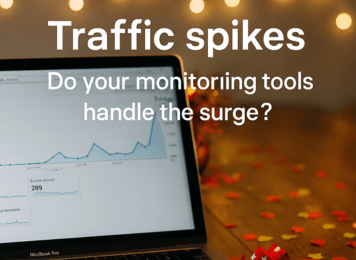Imagine this: you’ve launched a big campaign—maybe a holiday sale or a new product. Traffic on your website suddenly jumps. You’re focused on keeping customers happy and watching conversions climb. But in the background, something else might be struggling: your monitoring system.
Most businesses assume their monitoring tools will quietly do their job—until they don’t. And the irony? The moment you need them the most is exactly when they can start falling behind.
Some tools simply weren’t built for high-stress situations. They work fine on a normal Tuesday afternoon. But under campaign-level pressure? They can slow down, miss problems, or worse—stay silent when your site goes offline.
Key risks of relying on outdated monitoring solutions
Monitoring tools that haven’t evolved often rely on old setups or single-server systems. When things get busy, they:
- Miss important warnings like your site going down
- Overwhelm your team with dozens of confusing alerts
- Or fail to send alerts at all
The result? Everything looks fine—until your customers start messaging you that the site isn’t working.
How traffic spikes disrupt alert accuracy and response time
When your site is flooded with visitors, the monitoring tools are flooded too. They may not check fast enough. They might misread slowdowns as normal traffic. Or they might crash trying to keep up.
That’s how valuable minutes—sometimes hours—can slip away before you even realize something’s gone wrong.
